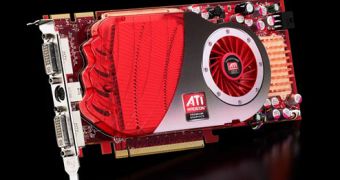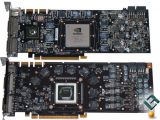The war on the GPU market we announced a few months ago continues with new rounds between Nvidia and AMD, the industry's two big players. Only a week ago, AMD launched a new series of graphics cards, the Radeon HD 4850, which made Nvidia react right away. The Santa Clara manufacturer chose three actions meant as a response to AMD's move.
First of all, the company announced it would reduce prices for its cards, so now we can have the GTX for $199 and the GTX+ for $229. Then, Nvidia said that it would release a new SKU under GeForce 9800 GTX+, a card it has been secretly working on. The last part consists of releasing a new driver capable of bringing an extra boost of performance to the cards.
The GeForce 9800 GTX+ came to the media this week, though Nvidia seems to have planned it to be released before or at the same time as AMD's Radeon HD 4850. The competition becomes extremely intense because the back to school shopping season is getting closer, and the market share is quite important in this period of time. The prices have been lowered for the same reason, as both companies need to make a good impact on the gamers and enthusiast customers? areas. 2008 will surely remain under the influence of these two cards, capable of offering the best prices versus performance for the mid-range graphics market.
Nvidia made a quiet change in its G92 core, used to power the GeForce 8 series and the 9600 GT, 9800 GTX, and 9800 GX2 cards from the GeForce 9 series. The company used the 55nm manufacturing process for the new card, and also increased frequency for the core and shader. At the same time, the Santa Clara-based firm also reduced costs and added the PhysiX support in the driver. We could say that today, Nvidia has managed to make the last step from Enterprise Computing to Visual Computing.
The new features Nvidia has brought to its cards and drivers make its actions sound like revolutionary ones. The CUDA enabled clients like Folding@Home can now be run on the GeForce graphics cards, and users can use the AGEIA PhysX SDK as well. Those that have a supported NVIDIA graphics card are allowed to enable game physics without the need of a separate physics card or a secondary graphics card.
The new GeForce 9800 GTX+ graphics card seems to be just a die shrink of the G92-based GeForce 9800 GTX, yet there are noticeable differences. The old 9800 GTX features a core clock set at 675MHz, while the 128 processors cores (shader clocks) operated at 1688 MHz. The 55nm 9800 GTX+ has a core frequency of 738 MHz and a processor clock of 1836 MHz. The memory stays at 1100MHz, yet the card is boosted enough to become the fastest in the GeForce 9 series.
The image shows two Nvidia based cards, the GeForce GTX 280 on top and the newly announced GeForce 9800 GTX+ on the bottom. The layout differences between 65nm and 55nm are obvious.

 14 DAY TRIAL //
14 DAY TRIAL // 
